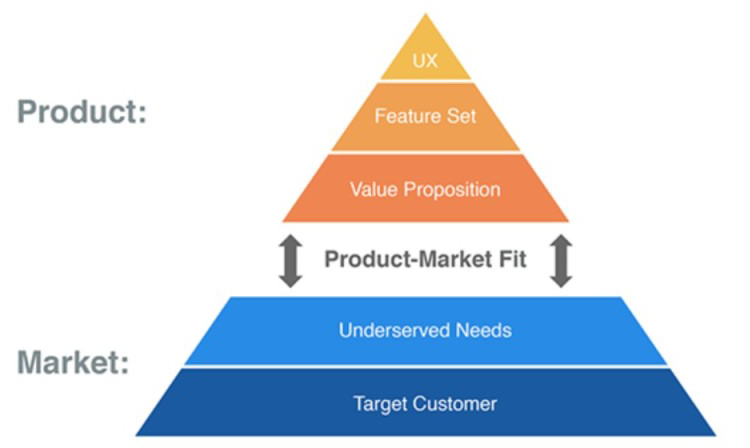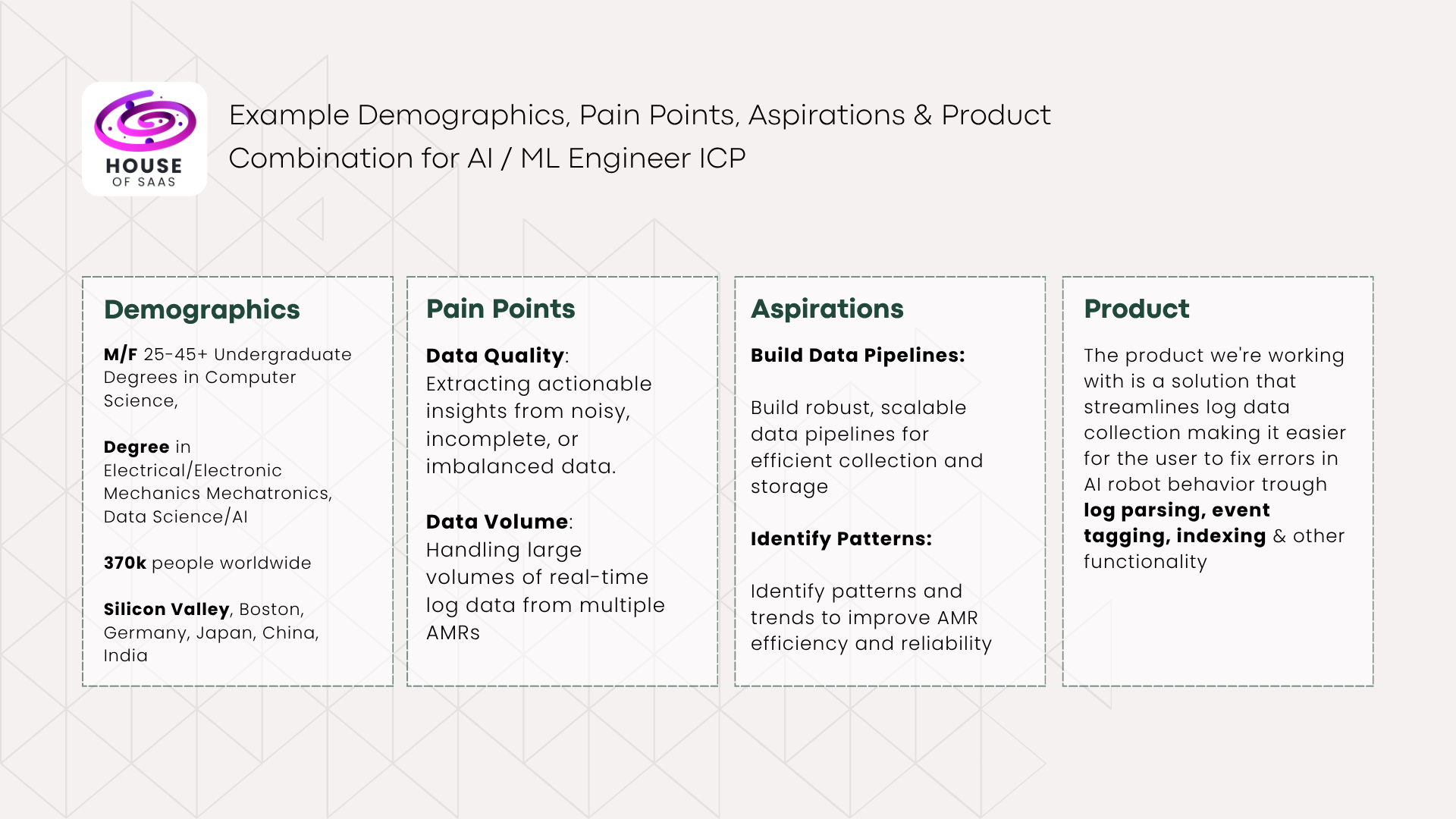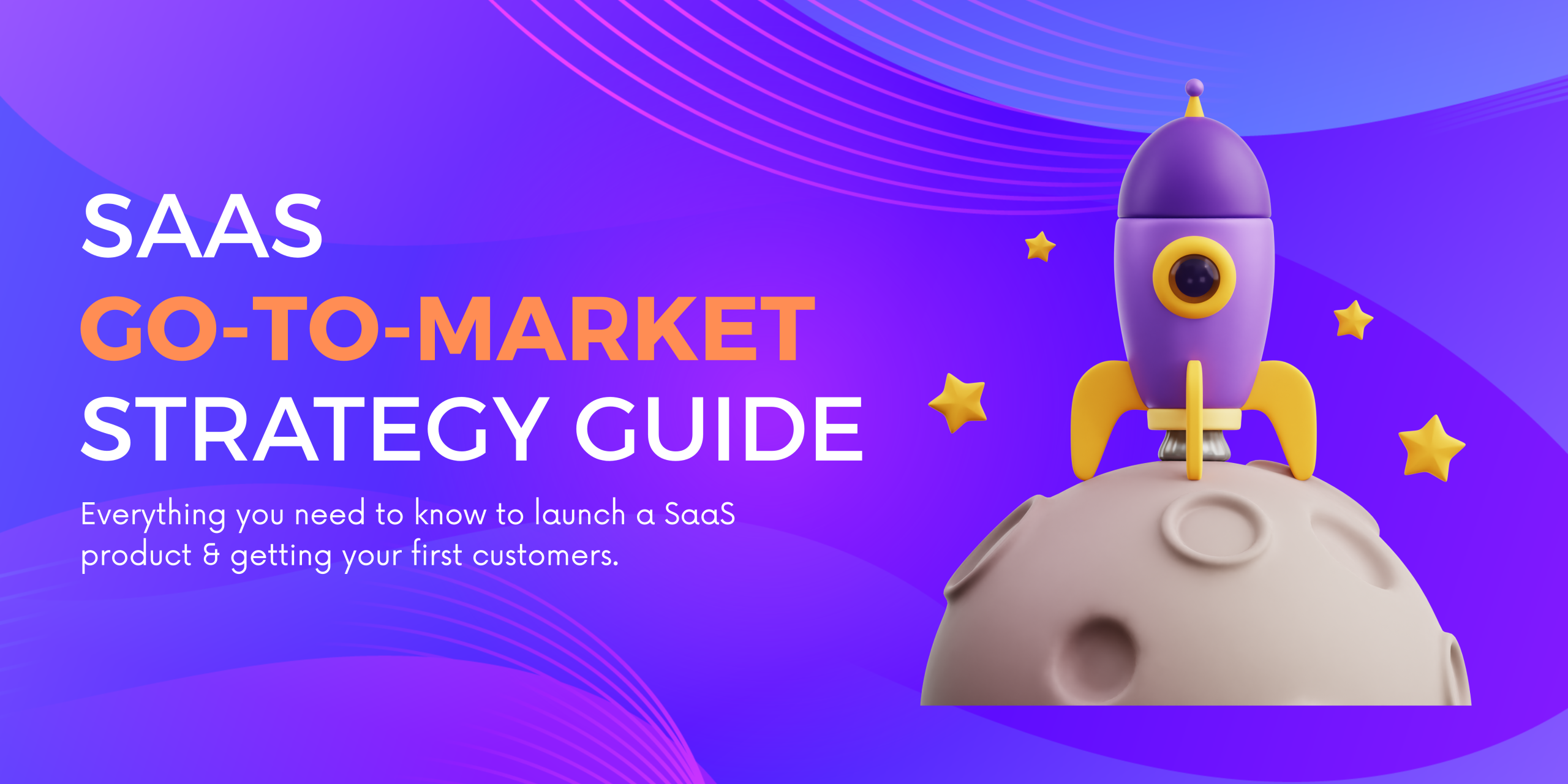Everything you need to know to launch a SaaS product & getting your first customers.
There are so many questions that come up when you’re about to launch that it can be overwhelming. But don’t you worry, you don’t have to be a marketing guru to get that traction and growth. Building a go-to-market strategy for your product is actually a fairly straight forward process. To create one you’ll need the ever essential marketing building blocks, plus a few other SaaS specific elements that come into play. Let’s get into it!
1. Understanding Your Potential Customer, and Building an ICP.
Introduction – All modern marketing starts from the customer.
In the spirit of product-led development, we should know everything about our customers, as the products we are developing are created to solve their problems and to create new opportunities for them.
If we don’t have a good understanding of who are customers are, and what their problems are, we’re bound to eventually run into a product-market-fit issue way before we can market anything to anyone.
Since you’re reading this, you probably have already built something, so I’m counting on you to know why and for who you built it. But If you haven’t, I strongly recommend the book “The Mom Test: How to Talk to Customers & Learn if Your Business is a Good Idea When Everyone Is Lying to You” — Rob Fitzpatrick. It will help you orient yourself during product discovery and customer interviews. If that’s the case, this guide might not align with the stage your product is in, but don’t let that stop you from learning!
Regardless weather you have a product, or not, this guide will offer you an opportunity to build your ICP in the right way – starting from your customer, their pain, and their aspirations. Understanding that will help you build a better, more oriented product, and a marketing strategy that actually works…
1.1 Building the ICP – Your product’s value proposition.
Let’s start by developing your product’s value proposition. It’s what’s at the core of any marketing message.
– What problem are you solving?
– Why is your solution unique?
– What value will it create?
Here are some simple examples. We’re marketing a financial savings solution to entrepreneurs.
– [Product Name] helps startup founders to manage their retirement savings.
– [Product Name] is the only retirement savings solution designed for the realities of founders
– [Product Name] turns unpredictable income into a reliable retirement plan.
Pro Tip: if you have more than one answer to a question you can create alternative versions. You can A/B test those once you start implementing your strategy.
1.2 Building the ICP – Demographics, Pain-points, & Aspirations, Environment.
Moving on to the details, think about who your ideal customer is. The ideal customer is a both an idealization, and a generalization of who a customer is for a particular product.
Think about what problems your ICP is experiencing. Think about what aspirations they have. Think about how old they are, what job they have, what education they have completed, and any other internal, or external detail that motivates them.

Where you customer’ problems begin and where your product meets them is where the magic happens.
Pro Tip: More on product-market-fit here
Start by adding by adding demographic details like age, gender, & market ( location ). Then add the pain-points & aspirations. Finally, add any other relevant environmental factors, like political views, cultural background, economic conditions, or regulatory constraints that might influence their buying decisions, product adoption, or engagement with your brand.
Example:
– Age – 35-45,
– Gender – Male & Female,
– Location – Working, or studying in countries part of the European Union.
– Work – Small business owner, entrepreneur, or has a solo practice.
Pain points:
– struggles to save money because of irregular income
– is too busy to structure finance
Aspirations:
– wants to save money for retirement
– wants to create security for themselves and their future.
Clear? Now, let’s combine all of the above to formulate the final core message.
Pro Tip: Prioritize your assumptions based on how important you think they are.
2. Creating The Core Messaging
Once you’ve created a solid hypothesis of who your customer & what problem you’re solving for them, you can begin fusing all of the components you created earlier into a final core message.
I’ll show you how we do that with an example from the autonomous mobile robot industry where our ICP is an A.I. / ML / Robotics Engineer:

And this is how it works when we combine everything into one final message.

Keep in mind that your message can, and will evolve with the placements you’re using it in. Different marketing and sales materials require different tones, and structures, so make sure your core message remains intact and is relaying that value regardless where you use it. While the angle and everything else is something that you can mold along.
3. Determining The Right Marketing Channels For Your GTM Strategy.
By now you should be an expert in creating value propositions, and you should have a solid marketing foundation to build on.
The ICP you built earlier has everything you need to determine which marketing channels make sense advertising on.
Let’s look at a real-world example & illustrate the techniques we use to build that marketing mix.
We’ll take our AI / ML Engineer ICP,
– M/F: 25–45
– Job Title: AI / ML Engineer
– Education: Undergraduate Degrees in Computer Science
– Degree in: Electrical/Electronic Mechanics, Mechatronics, Data Science/AI
– Population: 370k people worldwide
– Locations: Silicon Valley, Boston, Germany, Japan, China, India
Pain points & Aspirations
– Extracting actionable insights from noisy, incomplete, or imbalanced data.
– Handling large volumes of real-time log data from multiple AMRs (Autonomous Mobile Robots).
– Building robust, scalable data pipelines for efficient collection and storage.
– Identifying patterns and trends to improve AMR efficiency and reliability.
OK, How we go about this is very intuitive, and perhaps that’s the reason why it’s very difficult for some people. I don’t think there is one way to do it. Or a right way to do it…Above all, to be successful at this stage you’ll have to use your own common sense, and general knowledge of the world to extrapolate based on what you know about your ideal customer.
Age: M/F: 25–45+
Starting with the age bracket, we can deduct that those Engineers will be using social media, and other communication channels that are commonly used by people in those ages. That leaves us with: YouTube, Facebook, Instagram, LinkedIn, Tik Tok, X (Twitter), Pinterest, WhatsApp / Messenger.
Job Title: AI / ML Engineer
The job title tells us that they work with Artificial Intelligence, and Machine Learning, and that they’re Engineers, so we can use that to deduct that they’ll be technical thinkers, more often skeptical about mainstream media, which will exclude some of the ones we covered in the previous panel. That would narrow our channels to X, LinkedIN, Youtube. It’s general knowledge that Engineers are on X, LinkedIn for work opportunities, and Youtube for entertainment. We can also add Stack Overflow, GitHub, and Reddit as niche channels that they use for work, and community.
Education:
The field of study here can give us an idea of the interests, and groups that these people have. On their own they can’t do a lot for us beyond serving as a targeting parameter inside advertising systems, but they can help us extrapolate ideas for product interests. For example someone who’s studied mechatronics will surely be interested in robotics, and mechanics, and that IS something we can use down the road.
Locations:
This is something we can intake as is, no need for further investigation.
Pain points & Aspirations:
From the pain points & aspirations we can deduct that the people working in these companies handle large amounts of data which means that we can rule out small companies that only have a couple of robots. By the same logic we can extrapolate that the companies that handle larger amounts of data would have more robots to support so we’ll add that to our targeting list.
& so on, and so forth…
By now you should have an idea how this works. It absolutely is more art than science in most ways, and yes, there are other ways you can do this. More scientific ones at that as well. However, quite often ( if not always ) you won’t have the empirical data to support your ideas, or the time to collect it, and that’s when you’ll need to use your intuition.
Pro Tip: The best way to approach this, is to dig in to whatever data you can find, perform customer interviews, and engage in educated guesswork.
4. Summarizing Your Findings & Creating The Final Marketing Channel List
Let’s summarize what we’ve uncovered in the previous stage, clear out any extra details that we don’t need, and add more details wherever is necessary.
General Marketing Channels:
– YouTube
– LinkedIn
– X
Niche channels:
-Stack Overflow ( expanded example )
-Robotics Stack Exchange
-ROS Answers
-GitHub
-Reddit
Interests:
– Mechatronics
– IoT (Internet of Things)
– Mechanical design and CAD
– Robotics
– Robotics software (ROS, Gazebo, etc.)
– Robotics competitions & research (FIRST, RoboCup, IEEE Robotics)
You should now have a list of marketing channels, and places where you can reach your audience.
As always be as detailed as possible and creative as you can. The more you can expand this list, the more opportunities you’ll have to do marketing.
Now, let’s take a some time to prepare for the actual process of launching marketing campaigns on these channels, and look at what is the LEAN way to do so
5. Applying The LEAN Startup Principles When Going To Market
It’s very important to remeber that all we’ve written so far in our strategy is an educated assumption. Until we start testing these assumptions in real market conditions we won’t know if they’re accurate, or not. And that applies even when we have concrete market data that’s empirical. Therefore we should approach all marketing activities with a healthy does of skepticism.
From our experience at least 60% of the time what we think will work turns out to be incorrect, or at least partially incorrect.
To remediate this risk we always apply the LEAN Startup principles to building GTM strategies (and generally to everything we can) and we try to validate our assumptions before we commit more resources to the process.
This helps us keep resource spending & time commitment to the minimum, which in turn allows us to be flexible and agile.
Without this way of thinking we risk investing resources in something that has a high chance of failing, and you don’t want to that as a startup because your resources and time is limited.
So, let’s talk about how we go about this in practice.
6.Validate Your Assumptions Before Committing On A Larger Scale
Before you go on and set your GTM strategy free in the wild, run a smaller validation campaign on a couple of the marketing channels that you came up with earlier.
We usually do that by running paid ads, as this is by far the fastest, and most accurate way we can validate our ICP, and marketing messages, as organic channels take time to develop, and aren’t as precise as we need them to be.
So, I strongly advise you to set aside a small testing budget of 500-1000$ for ads in order to go trough the validation phase.
In terms of time, you should be able to gather insights in 1-2 weeks of time if you have everything else in place.
7. A/B Testing Different Assumptions
To maximize the impact of your validation campaign you should be A/B testing the different components of your strategy.
Have 1-2 versions of the ICP, the final messaging, and run these tests several marketing channels at the same time.
Each variant you create should be marginally different than the other one.
Focus on testing fundamentally different concepts – different brand tones, value propositions, different product formulas, and styles.
Large changes should produce big differences in results, and that’s what you’re aiming for. You’re trying to see what resonates best with your market.
8. Once You’ve Passed Product Validation
You’ve now passed trough product validation. you should now have a clear idea of where there’s an indication of product-market-fit.
Ideally you’ve spoken to a few real customers, and had your product in their hands.
You’ve gathered more insights, preferomed more interviews, and know more about your customers than before.
You can now approach product-development to improve your product and build something that’s even more adjusted than before.
You also can commit to building your marketing channels for the long(er) term.
Use the same methodology we’ve described in this guide to refine your strategy and build on top of it. There’s nothing more to it. Just iterate until you’ve succeeded.
If things didn’t work out for you, and you did not get good results from your validation campaign don’t despair. Go back to the drawing board and rethink your concepts.
The only way you can fail is if you give up.
Good luck & thanks for reading!
